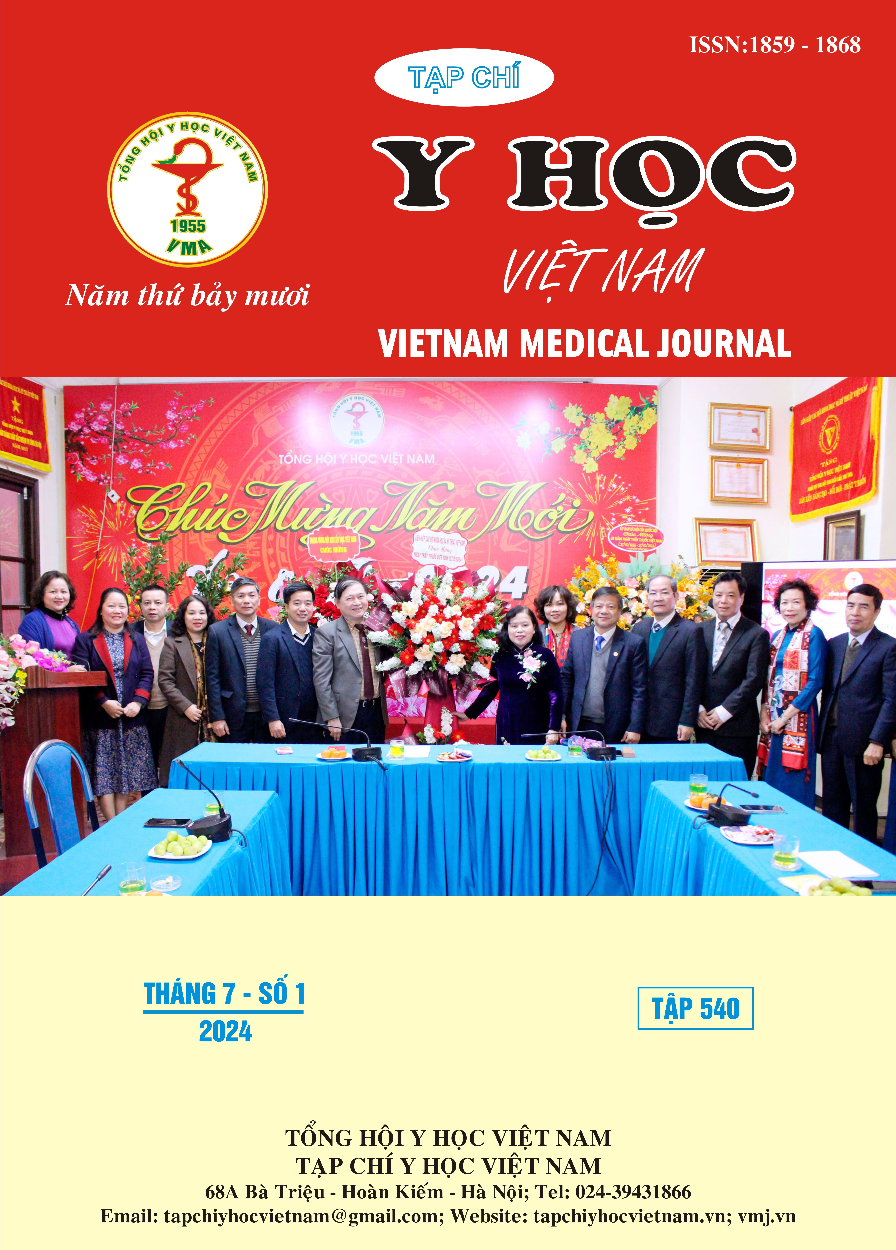NEUROMYELITIS SPECTRUM DISORDERS: RETROSPECTIVE OF 74 CASES AT UNIVERSITY MEDICAL CENTER IN HO CHI MINH CITY
Main Article Content
Abstract
Introduction: Neuromyelitis optica spectrum disorder (NMOSD) is a rare inflammatory demyelinating disease of the central nervous system characterized by bilateral optic neuritis and transverse myelitis. This is a neurological disease that has recurrent attacks with incomplete recovery. However, research on clinical, paraclinical and treatment of NMOSD in Vietnam is still limited. Objective: Describe the clinical characteristics of NMOSD. Research subjects and methods: Retrospective cross-sectional descriptive study of 74 NMOSD patients admitted at University Medical Center in Ho Chi Minh City from January 2018 to October 2022 who met the 2015 International consensus diagnostic criteria for neuromyelitis optica spectrum disorders. Results: Female: male ratio is 10:1. Median age of onset is 37.5 years [30.2; 46.8] with the minimum of 15 and the maximum of 78. The most common clinical manifestation as the first attack is acute myelitis (46.6%), optic neuritis (25.9%). Median of duration from the first clinical symptoms to NMOSD diagnosis is 18 months [2;39], with 0 months (i.e. immediate diagnosis) at the minimum and 252 months at the maximum. Three common misdiagnoses before NMOSD diagnosis are MS 20.7%, myelitis 31%, and optic neuritis 15.5%.
Article Details
References
2. Mealy MA, Mossburg SE, Kim SH, et al. Long-term disability in neuromyelitis optica spectrum disorder with a history of myelitis is associated with age at onset, delay in diagnosis/preventive treatment, MRI lesion length and presence of symptomatic brain lesions. Mult Scler Relat Disord. Feb 2019;28:64-68. doi: 10.1016/ j.msard.2018.12.011
3. Jarius S, Ruprecht K, Wildemann B, et al. Contrasting disease patterns in seropositive and seronegative neuromyelitis optica: A multicentre study of 175 patients. J Neuroinflammation. Jan 19 2012;9:14. doi:10.1186/1742-2094-9-14
4. Sepulveda M, Delgado-García G, Blanco Y, et al. Late-onset neuromyelitis optica spectrum disorder: The importance of autoantibody serostatus. Neurol Neuroimmunol Neuroinflamm. Nov 2019; 6(6)doi: 10.1212/nxi. 0000000000000607
5. Brod SA. Review of approved NMO therapies based on mechanism of action, efficacy and long-term effects. Mult Scler Relat Disord. Nov 2020; 46: 102538. doi: 10.1016/j.msard.2020. 102538
6. Huang W, ZhangBao J, Chang X, et al. Neuromyelitis optica spectrum disorder in China: Quality of life and medical care experience. Mult Scler Relat Disord. Nov 2020;46:102542. doi: 10.1016/j.msard.2020.102542
7. Beekman J, Keisler A, Pedraza O, et al. Neuromyelitis optica spectrum disorder: Patient experience and quality of life. Neurol Neuroimmunol Neuroinflamm. Jul 2019; 6(4):e580. doi:10.1212/nxi.0000000000000580
8. Lê Văn T, Vũ Hồng V, Nguyễn Thị H, Đỗ Thị H, Nguyễn Văn H. Đặc điểm lâm sàng, hình ảnh học cộng hưởng từ và tính an toàn của rituximab liều thấp trên các trường hợp mắc phổ bệnh lý viêm tuỷ thị thần kinh. TẠP CHÍ NGHIÊN CỨU Y HỌC. 2020;134 (10)


